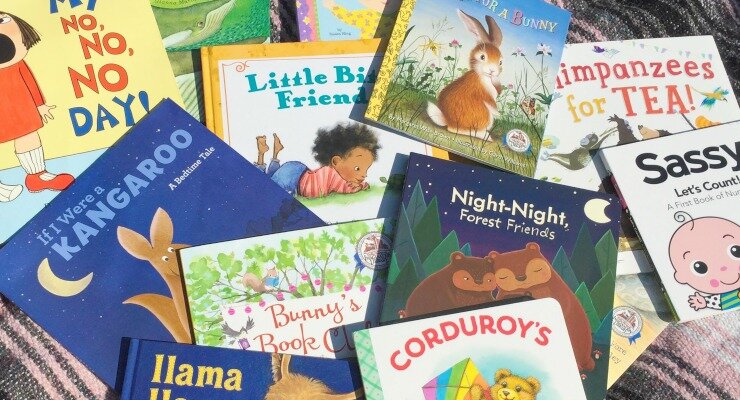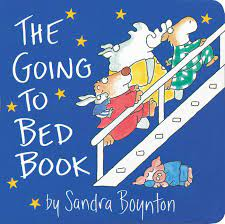Early Literacy for Infants & Toddlers
How reading, singing, and talking with your young children supports their development.
Books & Development:
Did you know that 80% of a child's brain develops in the first 3 years of life? The American Academy of Pediatrics notes that reading books out loud to your children starting at birth strengthens your parent-child bond and gets your baby started on essential language and literacy skills.
Infants and toddlers are in stages where they are constantly learning and developing language from their loved ones. Seeking opportunities to introduce books to your child can be a positive way to develop their social, emotional, language, and communication skills. Many families find that planning times to read, sing and talk with their young children helps create a daily schedule and bonding time. Below we will discuss the best research-based practices for reading, recommended books for each stage, and other early literacy resources!
When should I start?
Studies have shown that it is never too early to start reading children’s books to your infant. Developing language and literacy skills begins at birth through everyday loving interactions, such as sharing books, stories, singing songs and talking to one another. This doesn't need to be a time where you are “teaching” your young child to read. Simply sharing positive interactions, music, and stories builds your child's early literacy and communication skills.
What books are best?
Infants: Birth-One Year
The best books for newborns have high contrast images that they can see at a close proximity. When a baby is first born they can see around 8-15 inches away from their face. Placing a book in your infants direct line of sight helps them see the shapes and images more clearly. This can be done during tummy time, while feeding, bath time, or during a car ride. Talking out loud about anything you're doing and reading your everyday texts, recipes, or books is also recommended. While it’s helpful to know which books are more appropriate visually to infants, they learn so much from simply hearing your voice.
Rhyming text that flows is also encouraged for babies and young children. You can create a song out of any normal routine in your baby's life such as bath time, changing, or getting in the car. There are also many popular nursery rhymes that are easy to repeat and teach babies. This is a time for your infant to just hear their families voices reading/singing and see various facial expressions. Babies will often copy certain sounds in a song or an expression they see often. There are also many book options about emotions that are developmentally appropriate for infants. These books can have mirrors and pictures of other babies making common facial expressions.
Describing your baby's emotions and feelings builds on their language and literacy skills. When you see them feeling upset or hungry you can say things like, “I see you're hungry and that makes you feel frustrated. Let’s get you some milk.” or “You're smiling, do you like that funny sound I’m making?”. Even though your baby cannot yet understand words, they hear a loving and soft tone. This will make them feel heard and understood.
Toddlers: One to Three Years
For toddlers, thick board books that they can touch, point at, and interact with are best. If young children are actively engaged and excited about a book, they're learning. Picture books with colors, shapes, ABC’s or counting are great for toddlers too.
These books often serve as activity books that encourage children to sing and interact while reading. It is developmentally appropriate for young children to move as they learn. They don’t need to be sitting down to enjoy a good book. Toddlers will also often get up and go play something else during a book. Research says it is not recommended to force young children to stay to finish a book. This could cause negative feelings towards reading and that is not the goal. Follow their lead and keep the experiences enjoyable.
When you read with your toddler, discuss the illustrations, talk about what you see on each page, and point out details together. Recognizing and building upon your child’s interests is a great way to make lasting literacy connections. You’ll know your toddler is interested when they get excited about a picture. They might show this by pointing, laughing, or wanting to repeat the page/book. Build on these interests by asking questions or making observations about the pictures and making connections to their real world.
Nursery Rhymes:
Twinkle, Twinkle Little Star
Humpty Dumpty
Row, Row, Row Your Boat
Wheels On The Bus
Itsy, Bitsy Spider
One, Two, Three, Four, FIve
Pat-A-Cake, Pat-A-Cake
Zoom, Zoom
Studies have found that when children have a home library, with as little as 20 books of their own, they achieve 3 more years of schooling than children who don't have any books at home.
Easy Bookmaking Tips:
Reading with your young children does not have to break the bank. There are many resources and free ideas to help with building your home library. Book making can be a fun and easy way to connect your child's real life to literacy.
Below is a list of ideas to get you started!
Make clear connections to children's everyday world.
Include pictures of familiar people, places, or items.
Keep pages short/focused- A couple words to each page and build as they grow.
Use black & white contrast art (Infants)
Laminate, use plastic page protectors or fabric to make the pages thicker.
Use repetition & rhyme.
Have fun!
The Dolly Parton Imagination Library is a wonderful free resource. You can register your child at birth to receive a book in the mail every month for the first five years of their life! They provide high quality and developmentally appropriate books to every family, no matter their income.
“Dolly Parton’s Imagination Library is dedicated to inspiring a love of reading by gifting books free of charge to children from birth to age five, through funding shared by Dolly Parton and local community partners in the United States, United Kingdom, Canada, Australia and Republic of Ireland.”
Learn more on their website:
Dolly Parton's Imagination Library- Link
Early Literacy Book Suggestions:
Look, Look!
By: Peter Linenthal
First 100 Words in English and Spanish
By: Ana Godinez
TummyTime: Happy Baby
By: Duopress labs, Violet Lemay
The Going-to-Bed Book
By: Sandra Boynton
Pat the Bunny
By: Dorothy Kunhardt
Leo Loves Baby Time
By: Anna McQuinn
Sources:
NAEYC Website: https://www.naeyc.org/
National Association for the Education of Young Children.
Zero to three website: https://www.zerotothree.org/
https://www.scholastic.com/
https://imaginationlibrary.com/











